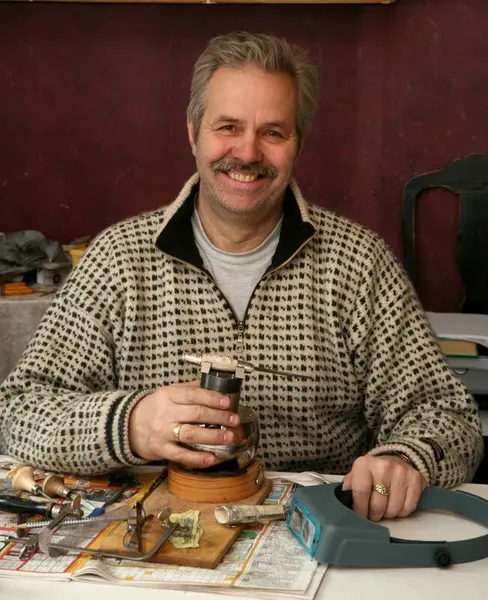By Per Thoresen
Norwegian knives
An important feature of Norwegian hand-crafted knives is their "dialects". This refers to the fact that various districts have their characteristic local knives, so that we can tell the difference between knives from, for example, Trøndelag, Telemark and Toten. In addition, we have knives related to two groups of people: Tater knives and Sami knives. The Sami knives are the same in all of Lapland. Tater knives are similar in Sweden and Norway. Some Tater knife makers lived alternately in Norway and Sweden, resulting in a steady mix of Tater knife makers from these countries appearing at markets such as the Røros Market.
Time period
Very few Tater knives were produced before the end of the nineteenth century, a phenomenon which may have several explanations: either they did not produce knives earlier, or they made knives we do not perceive today as being typical Tater/Romani knives.
Designations
The typical Tater knife is not generally a utility knife, but more of a decorative one. It is more often made for sale to people outside the group than for their own use. The knives they traditionally made for themselves were often simple "Mora knives".
The term "Tater knife" is used by people outside the group and is not a term that they use among themselves. It is a useful generic term, and all knife enthusiasts know immediately if a knife is made in the "Tater way", with its traditional shape, details, materials, techniques and workmanship.
- 1/1
Small women’s knife, bone. Inscription «Wilhelmine 19.8.07». Foto: Anno Glomdalsmuseet
Production
The knives can be made under the humblest of conditions. Within the same time period, a knife maker can create exquisite, high-quality knives and knives that appear to have been made by a beginner. The former would be made in the workshop at home, the latter more or less by the roadside. In earlier times, when the Tater people would be constantly on the move, many of the knives were soldered in wood stoves on the farms they passed through. The knives were often made for an agreed price. When the buyer was unable or unwilling to pay much, the knife had to be simple. When the right customer came along, a skilled knife maker could flourish and create an extraordinary knife.
- 1/1
A selection of romani knives. Foto: Anno Glomdalsmuseet


















